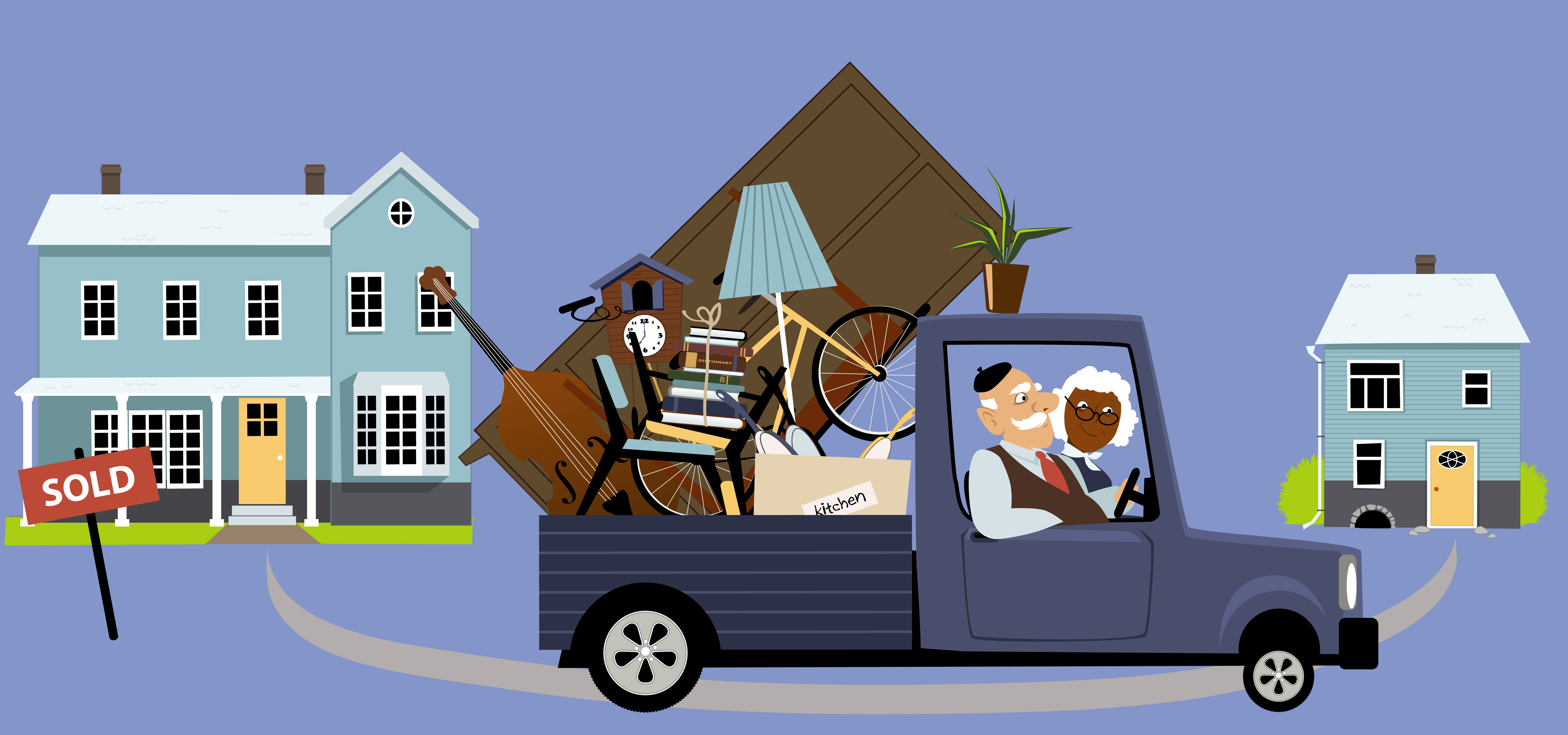
Once you’ve made a decision to take charge of your own
health, safety or social needs by moving to a Senior
Living Community,
1. Prepare in Advance
Whether choosing to move now or later, you should start
putting your home in order today. Begin by evaluating what you really need to
keep and then start to downsize, clear out clutter, plan an Estate Sale or make
major home repairs. It is a proven fact that homes will sell for a higher price
if they are “market ready”, or “staged”,
at the time of listing.

2. Establish a Plan
A good plan can save time and money, but a professional,
well structured plan can help alleviate stress and save money. Establish a
relocation timetable as best you can and gather advice from qualified
professionals such as movers, realtors, financial advisors and estate sale
professionals. You may consider hiring a move manager such as Caring Transitions®, the nation’s
most trusted resource for over a decade. Managers and project coordinators will
establish a team approach to ensure a successful senior home transition.
3. Establish a Timeline
Start with the date of your intended move and then schedule
everything from that time back to the present day. Set some realistic steps and
goals for moving forward and don’t try to do everything at once, so you are not
overwhelmed. Take time to recognize what you do accomplish every week so you
will feel better about progress. Establish definitive dates for hiring
resources or completing projects.
4. Space Plan
Very few moves can be successful without an accurate space
plan, especially when moving to a late life, senior living community, which is
typically much smaller than traditional family homes. Those who choose to move
without a plan are often distraught by the end of a move when they realize
their new apartment is cramped and uncomfortable due to too much furniture or poorly
planned storage.
Professional organizations such as Caring Transitions® work
closely with clients to understand what is meaningful and important among their
possessions. They utilize accurate space planning tools that help create ideal new
environments and help clients feel at home while reducing the expense of moving
unnecessary items.

5. Downsize
Downsizing goes hand-in-hand with space planning for a
smaller home, yet it is sometimes the most difficult part of a “senior move”. Many
people find it daunting to sort through a lifetime of possessions in order to
narrow down the selection of items they will move to a new home. To help older
adults who struggle with those decisions, industry experts such as Caring Transitions ®,
help clients “right-size” their possessions. Rightsizing helps individuals
focus on what is necessary and important to their daily care, comfort and
personal identity. Less importance is placed on volume and more importance is
placed on meaning and use.
Many items fall by the wayside during this rightsizing
process and those that hold sentimental value are best given to other as legacy
gifts and those that hold material value are best awarded as inheritances or
liquidated through an estate
sale or online auction.
Above all, remain
focused on what is important for your health, welfare and safety. As long as
your medical and financial circumstances allow time to plan, seek the advice
and support needed so you can remain in control of this next step in your life.
Contact us for a free consultation today!